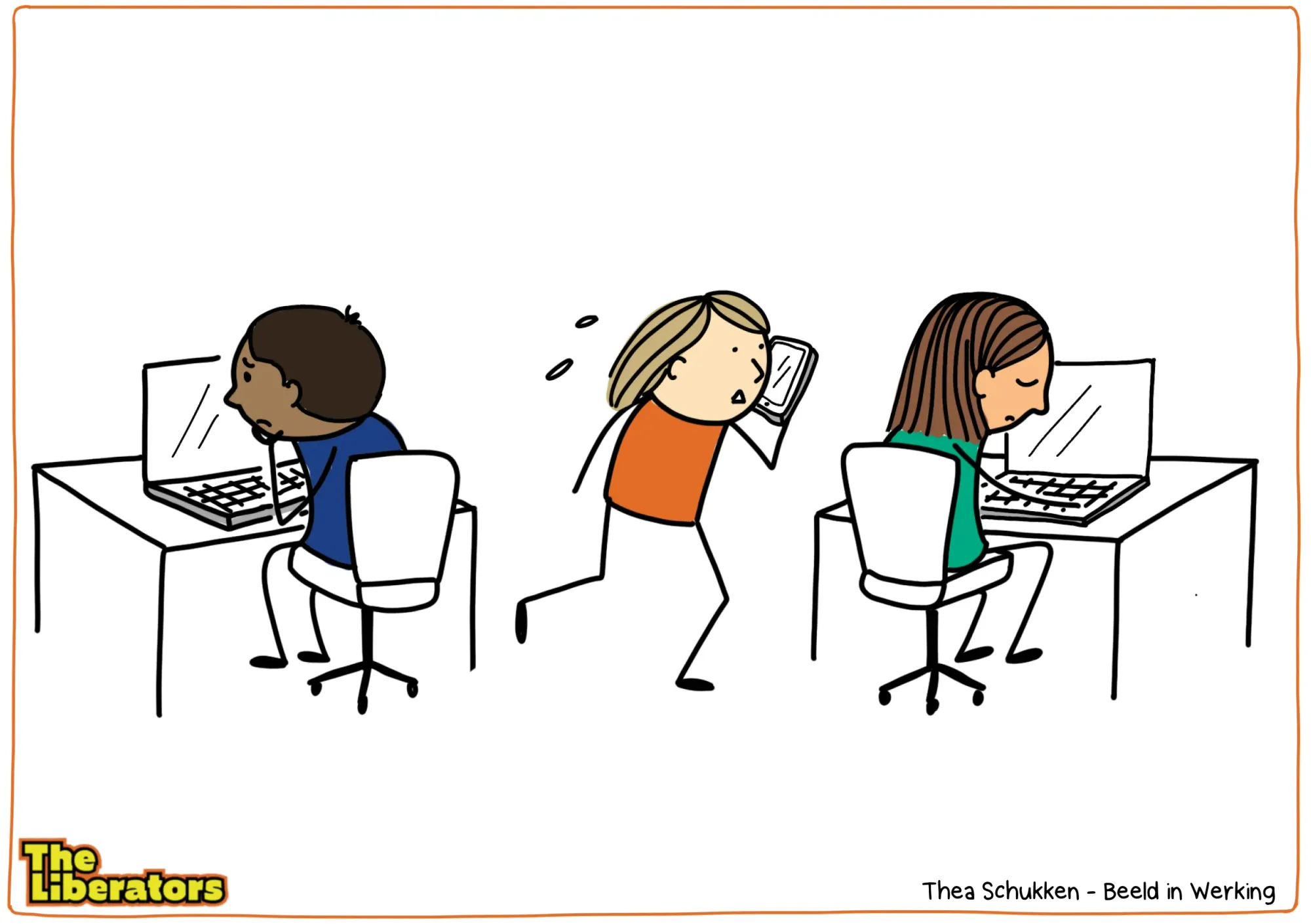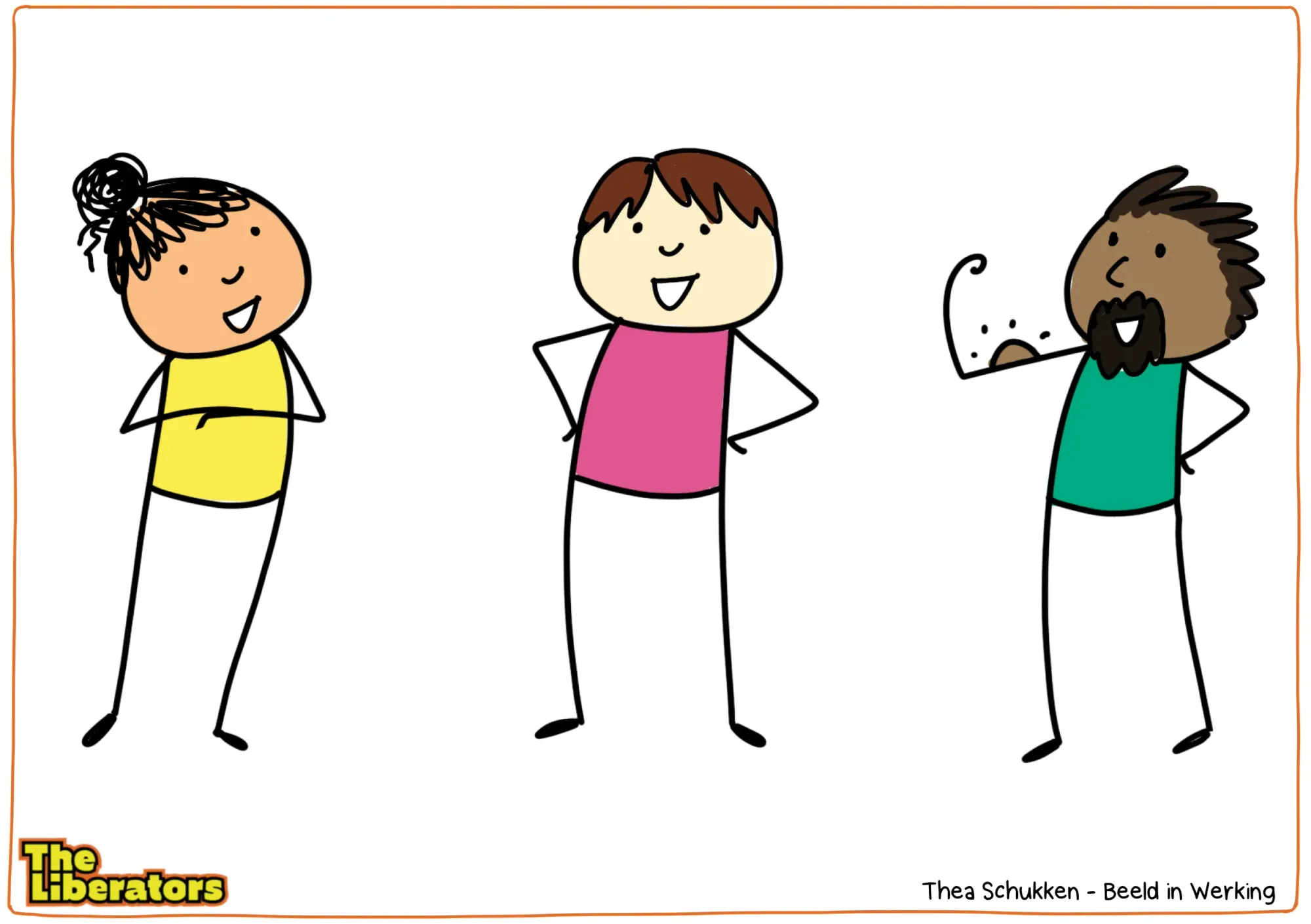When Do High-Performing Teams Burn Out?

“Can a high-performing team burn out?” recently appeared in a community meetup. It's an intriguing question because it starts from a favorable situation. If you’ve ever been part of a high-performing team, you know how exhilarating it can be. But paradoxically, it's also a place where people can lose themselves in their work and collapse under the strain.
In this post, we apply an evidence-based perspective to this question. What do we know from scientific research about how high-performing teams can burn people out? What can we do to prevent that, or at least diminish the chance of it happening?
You can measure team morale for your team(s) with Columinity, which is often the inverse of team burnout. Go to highperformingteams.columinity.com to try. Our free plan is great for individual teams, but with a paid plan you can track this factor - and many others - across many teams in the same or different organizations.
When Is A Team High-Performing?
The concept of High-Performing Teams was first introduced by the Tavistock Institute in the 1950s. It emerged alongside growing interest in the “human factors” of the workplace, including motivation, job satisfaction, communication, loyalty, social identity, and other social needs (Trist & Bamforth, 1951). Around the same time, work shifted from being predominantly technical and labor-intensive to knowledge-based and analytical. While production lines had been the dominant work structure since the Industrial Revolution, companies increasingly began organizing employees into “work groups” of 5–30 members, each tasked with achieving a specific objective. This marked the beginning of teamwork as a managerial strategy.

By the 1960s, organizations paid more attention to the elements contributing to effective teamwork (Thamhain & Willemon, 1987). Formal project management methodologies were introduced during this period to enhance coordination, governance, and communication. At the same time, organizational psychologists developed theories and strategies to improve team dynamics and performance.
However, teamwork alone doesn’t always lead to high performance. In fact, Hackman (1998), one of the leading researchers in this field, found that teams often underperform compared to non-team groups. This shortfall is frequently attributed to organizational obstacles or managerial missteps—such as rewarding individuals over teams, excessive micromanagement, or vague goals. According to Hackman, six key conditions must be met for a team to achieve high performance:
- The task or objective must be well-suited to teamwork.
- The team should have well-defined boundaries, with members clearly aware of their inclusion.
- A clear and specific goal must guide the team’s efforts.
- The team’s structure should support collaboration through shared norms, skills, and composition.
- The organizational environment must reinforce and incentivize teamwork.
- Teams should receive coaching and support in areas where they are ready to improve.
There are numerous interpretations of what makes a team high-performing. Some frameworks focus on team member motivation, strong social bonds, and long-term stability. However, one commonality across definitions is that high-performing teams consistently deliver excellent results while demonstrating agility and adaptability.
The Cost Of High-Performance
It's great to be part of a high-performing team. But it can also be very stressful to maintain such a high level consistently.
Individual burnout and performance
Burnout is commonly defined as a combination of emotional exhaustion, detachment, depersonalization, and a diminished sense of personal achievement (Maslach, Jackson & Leiter, 1997). While not classified as a medical disorder, burnout results from prolonged work-related stress. Stress itself is the body’s natural reaction to perceived threats, triggering a fight-or-flight response by increasing cortisol levels, tightening muscles, restricting blood flow, and deprioritizing non-essential functions. While this response was highly effective for early humans facing immediate dangers in the wild, it is far less suited to the modern workplace. Today, factors such as workplace expectations, tight deadlines, interpersonal conflicts, and concerns about job stability can activate the same biological stress response as encountering a predator.

When these stressors—such as looming deadlines, workplace conflicts, or job insecurity—persist over time, burnout can build up gradually. This is especially true when individuals feel unable to step back, take breaks, or request time off. Left unchecked, burnout can contribute to serious health conditions, including chronic exhaustion, cardiovascular issues, clinical depression, and even suicidal ideation. A 2021 study of 1,501 U.S. workers found that three out of five employees experienced symptoms of burnout due to workplace stress. Clearly, burnout is a serious issue that requires attention.
Research by Taris (2007), which analyzed multiple studies on the link between burnout and job performance, found that employees experiencing high levels of exhaustion exhibited lower commitment (r = -.19), decreased ability to fulfill their responsibilities (r = -.22), and significantly lower customer satisfaction ratings (r = -.55). This indicates that burnout is not only damaging to individuals but also detrimental to overall business performance. Similarly, research by Consiglio et. al. (2013) revealed a strong correlation between burnout and increased absenteeism, leading to higher costs for employers. Additional studies have also demonstrated that stress leads to more mistakes in the workplace (Furuyama, Arai & Lio, 1996, Sonnentag et. al., 1994), and that high-stress environments significantly raise the likelihood of burnout (Sonnentag et. al., 1994).
Team Burnout and performance
In recent years, team burnout has gained attention (Urien et. al., 2021) as researchers explore why entire teams can experience burnout collectively. For instance, a study conducted by Li et. al. (2014) on healthcare teams discovered that 16% of the variance in individual burnout levels could be attributed to a team-level factor: group cohesion. This research builds upon the study of team mental models, suggesting that team members, both individually and collectively, constantly interpret their surroundings, stressors, and responsibilities. A challenge that feels overwhelming to one member might not have the same effect on another. Over time, through a process known as “compilation” (Kozlowski & Ilgen, 2006), teams may develop a shared perception of being overworked, exhausted, and stressed. As a result, members may disengage from collaborative efforts and shift toward a more individualistic approach (Driskell, Salas & Johnston, 1999).
These findings highlight the highly subjective nature of burnout. What one person finds incredibly stressful might not have the same impact on someone else—similar to how post-traumatic stress (PTS) affects individuals differently. In team settings, perceptions of stress may begin to align over time. However, this subjectivity can lead people to dismiss or downplay burnout symptoms in themselves or their colleagues. The crucial takeaway is that whether stressors are objectively present is irrelevant—what truly matters is how they are perceived.
What this research tells us is that burnout contains a substantial subjective component. What is exceptionally stressful for one person may not be experienced that way by someone else. Similarly to post-traumatic stress (PTS), one person may develop deep trauma after a fearful event while another may not. In teams, these interpretations may converge over time. This subjective component may incorrectly lead people to belittle, diminish, disregard, or discard signals from individuals or teams that they are burning out. But it doesn’t matter if the reported stressors are there objectively; the perception is all that matters.
“The reality of the stressor is secondary; perception is what drives burnout."
How Can High-Performing Teams Burn Out?
Now that we have a clearer understanding of high-performing teams and team burnout, we can explore why these high-achieving teams are particularly vulnerable to burnout. While I haven’t come across empirical studies that focus specifically on burnout within high-performing teams, we can draw insights from broader research on burnout in Agile teams (Tulili, Capiluppi & Rastogi, 2023) to understand potential causes. Based on this research, several key factors seem especially relevant:
- The high-performance standards that drive a team’s success can also create significant stress, mainly when members deal with outside distractions. These distractions may stem from workplace changes—such as shifting team compositions, reorganizations, or juggling multiple teams—or personal challenges like health issues, grief, or mental strain. Standard norms in such teams include: “We always follow through on our commitments,” “We strive to exceed expectations,” “We don’t complain when things get difficult,” and “We work beyond 9–5 if that’s what it takes to get things done.” While these expectations contribute to success, they can also heighten pressure.
- High-performing teams tend to have strong social bonds (Hackman, 1987, Carless & De Paola, 2000)), which is a significant advantage. However, these close-knit relationships can lead individuals to push beyond their limits, feeling an unspoken obligation to keep up with the group rather than express when they’re overwhelmed.
- These teams may also overcommit, taking on more work than they can handle. Their past success can lead to overconfidence, which can cause them to underestimate the impact of inevitable setbacks.
- A strong team identity (Carless & De Paola, 2000) is often a source of pride and motivation. However, if a team has never faced a significant failure—such as a security breach or a critical system breakdown—their first significant setback can be particularly damaging to their collective identity, hitting them harder than it might other teams.
- Lastly, high-performing teams may feel external pressure to maintain their productivity levels, avoiding necessary breaks even when they have the autonomy to step back.
Ultimately, the very qualities that drive high-performing teams to excel can also make them susceptible to burnout over time.

Closing Words
Being part of a high-performing team is an enriching experience, but it also comes with pressures. Because these teams set high standards and operate with a strong sense of purpose, they often struggle to slow down when needed. This post has explored research-backed insights into high-performing teams and associated it with team burnout. In our next post, we will cover three strategies to prevent or recover from a team burnout.
You can measure team morale for your team(s) with Columinity, which is often the inverse of team burnout. Go to highperformingteams.columinity.com to try now. Our free plan is great for individual teams, but with a paid plan you can track this factor - and many others - across many teams in the same or different organizations.


